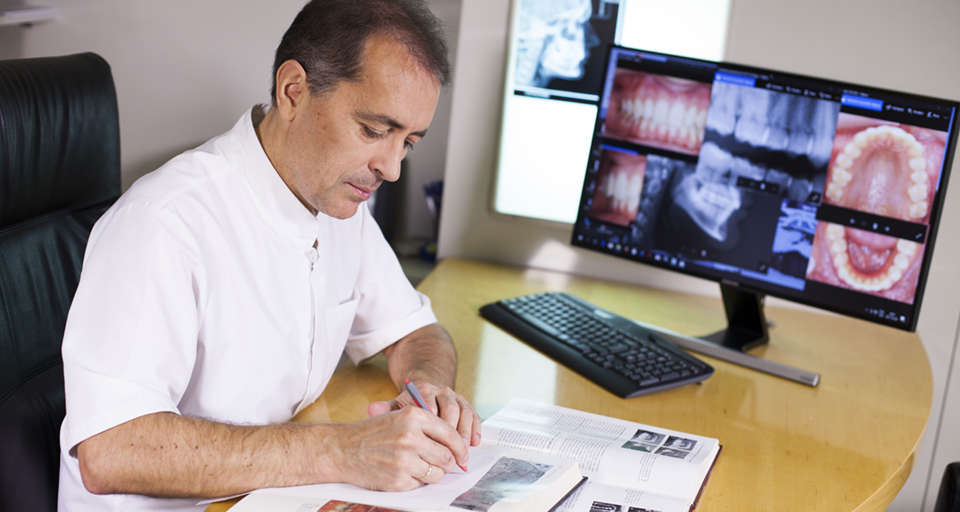Reproducibility and accuracy of linear measurements on dental models derived from cone-beam computed tomography compared with digital dental casts.
Written by admin on September 30, 2014
Am J Orthod Dentofacial Orthop. 2014 Sep;146(3):328-36. doi: 10.1016/j.ajodo.2014.05.026.
de Waard O(1), Rangel FA(2), Fudalej PS(3), Bronkhorst EM(4), Kuijpers-Jagtman AM(5), Breuning KH(6).
Author information:
(1) Postgraduate student, Department of Orthodontics and Craniofacial Biology,
Radboud University Nijmegen Medical Centre, Nijmegen, The Netherlands.
Electronic address: orthodontics@dent.umcn.nl.
(2) Junior researcher, Department of Orthodontics and Craniofacial Biology,
Radboud University Nijmegen Medical Centre, Nijmegen, The Netherlands.
(3) Senior lecturer, Department of Orthodontics, University of Bern, Bern,
Switzerland; associate professor, Palacky University, Olomouc, Czech Republic.
(4) Statistician/methodologist, Department of Preventive and Curative Dentistry,
Radboud University Nijmegen Medical Centre, Nijmegen, The Netherlands.
(5) Professor and chair, Department of Orthodontics and Craniofacial Biology,
Radboud University Nijmegen Medical Centre, Nijmegen, The Netherlands.
(6) Assistant professor, Department of Orthodontics and Craniofacial Biology,
Radboud University Nijmegen Medical Centre, Nijmegen, The Netherlands.
INTRODUCTION: The aim of this study was to determine the reproducibility and
accuracy of linear measurements on 2 types of dental models derived from
cone-beam computed tomography (CBCT) scans: CBCT images, and Anatomodels
(InVivoDental, San Jose, Calif); these were compared with digital models
generated from dental impressions (Digimodels; Orthoproof, Nieuwegein, The
Netherlands). The Digimodels were used as the reference standard.
METHODS: The 3 types of digital models were made from 10 subjects. Four
examiners repeated 37 linear tooth and arch measurements 10 times. Paired t
tests and the intraclass correlation coefficient were performed to determine the
reproducibility and accuracy of the measurements.
RESULTS: The CBCT images showed significantly smaller intraclass correlation
coefficient values and larger duplicate measurement errors compared with the
corresponding values for Digimodels and Anatomodels. The average difference
between measurements on CBCT images and Digimodels ranged from -0.4 to 1.65 mm,
with limits of agreement values up to 1.3 mm for crown-width measurements. The
average difference between Anatomodels and Digimodels ranged from -0.42 to
0.84 mm with limits of agreement values up to 1.65 mm.
CONCLUSIONS: Statistically significant differences between measurements on
Digimodels and Anatomodels, and between Digimodels and CBCT images, were found.
Although the mean differences might be clinically acceptable, the random errors
were relatively large compared with corresponding measurements reported in the
literature for both Anatomodels and CBCT images, and might be clinically
important. Therefore, with the CBCT settings used in this study, measurements
made directly on CBCT images and Anatomodels are not as accurate as measurements
on Digimodels.
Copyright © 2014 American Association of Orthodontists. Published by Elsevier
Inc. All rights reserved.
DOI: 10.1016/j.ajodo.2014.05.026
PMID: 25172255 [Indexed for MEDLINE]




